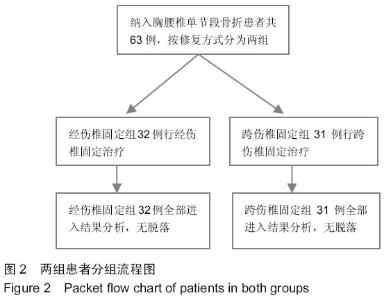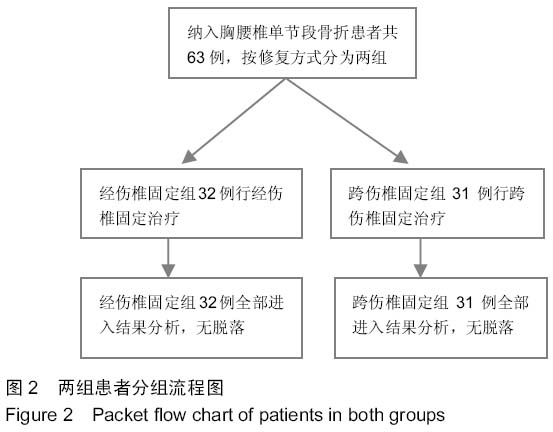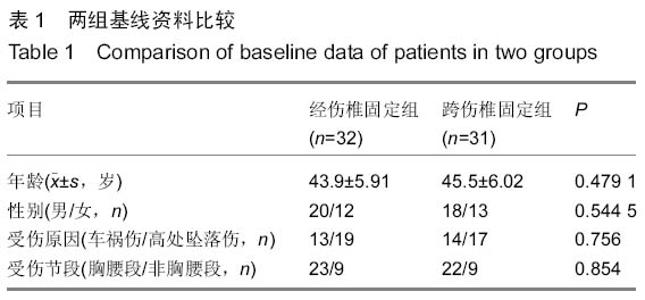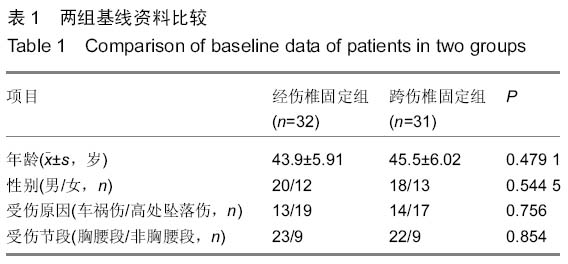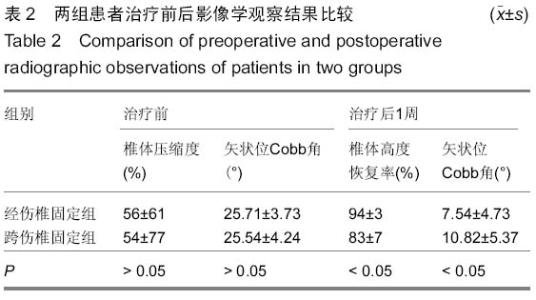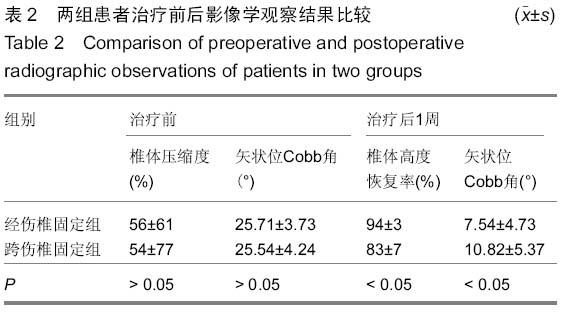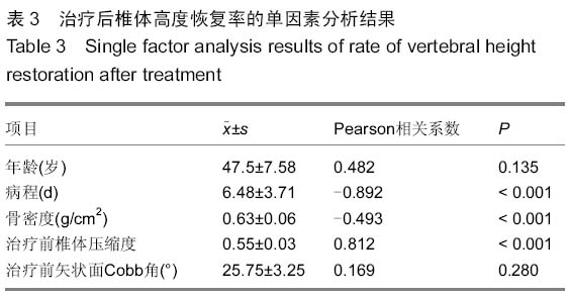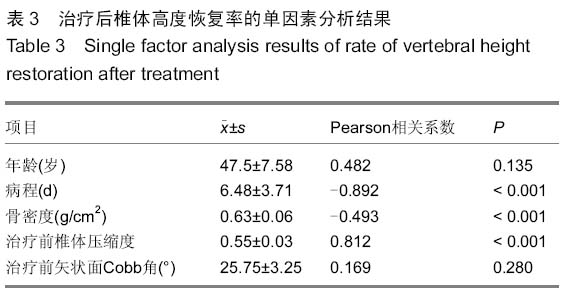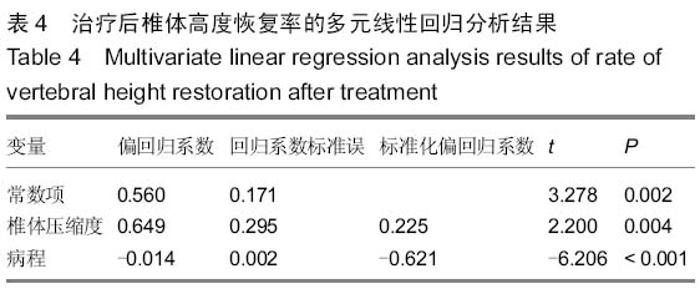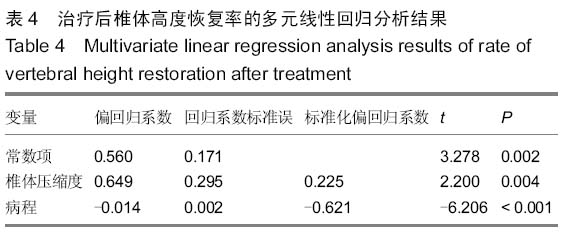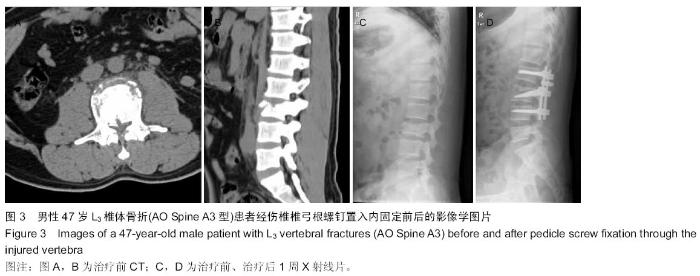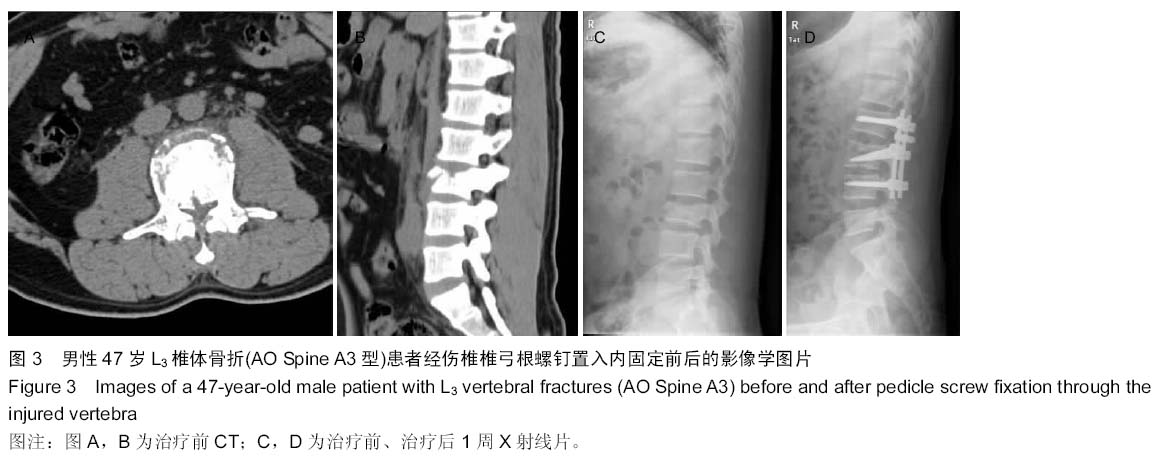| [1] 张文武,申勇,姚晓光,等.后路长节段椎弓根螺钉固定治疗胸腰椎骨折的疗效评价[J].中国矫形外科杂志,2014,22(6): 487-492.
[2] 孙先润,唐涛,赵晓芳,等.不稳定性胸腰椎骨折合并脊髓损伤的治疗体会[J].中国矫形外科杂志,2011,19(2):158-161.
[3] 黄金波,史晨辉,王维山.GSS治疗胸腰椎骨折并发症及防治[J]. 中国矫形外科杂志, 2007,15(20):1534-1536.
[4] 佘建华,黄飞,赖爱宁.胸腰椎骨折手术时机与椎体高度丢失关系的研究[J].中国骨与关节损伤杂志, 2015,30(1):87-88.
[5] Vaccaro AR, Oner C, Kepler CK, et al. AOSpine thoracolumbar spine injury classification system. Fracture description, neurological status, and key modifiers. Spine 2013;38(23):2028-2037.
[6] Phillips FM, Ho E, Campbell-Hupp M, et al. Early radiographic and clinical results of balloon kyphoplasty for the treatment of osteoporotic vertebral compression fractures. Spine. 2003;28 (19):2260-2265.
[7] 王洪复,朱国英.骨密度峰值与骨质疏松症的诊断[J].中华老年医学杂志,2003,22(3):189-192.
[8] 李康杰,姜永杰,郑光彬,等. 应用Reclvse内固定结合经椎弓根植骨治疗胸腰椎爆裂骨折[J].中国矫形外科杂志,2010,18(22): 1920-1923.
[9] Patel AA,Vaccaro AR,Albert TJ,et al. The adoption of a new classification system:time-dependent variation in interobserver reliability of the thoracolumbar injury severity score classification system. Spine(Phila Pa 1976). 2007; 32(3):E105-110.
[10] 王洪伟,李长青,周跃,等. 伤椎置钉技术治疗胸腰椎骨折的生物力学及临床随访研究[J].中国矫形外科杂志,2011,19(16): 1356-1360.
[11] 张金山,郑勇强,林亮,等.经椎弓根伤椎植骨结合短节段椎弓根钉内固定治疗胸腰椎骨折[J].中国骨与关节损伤杂志,2015, 30(5):514-515.
[12] 杜心如,赵玲秀,石继川,等.经伤椎椎弓根螺钉复位治疗胸腰椎爆裂骨折的临床解剖学研究[J].中国临床解剖学杂志,2007,25(3): 239-242.
[13] Shen WJ, Liu TJ, Shen YS. Nonoperative treatment versus posterior fixation for thoracolumbar junction burst fractures without neurologic deficit. Spine (Phila Pa 1976). 2001;26(9): 1038-1045.
[14] Mahar A, Kim C, Wedemeyer M,et al. Short-segment fixation of lumbar burst fractures using pedicle fixation at the level of the fracture. Spine (Phila Pa 1976). 2007;32(14):1503-1507.
[15] 李晶,吕国华,王冰,等.胸腰椎骨折脱位伤椎固定的可行性研究[J].中华骨科杂志,2005,25(5):293-296.
[16] 李剑勇,殷潇凡,夏江霓,等.椎弓根钉内固定治疗胸腰椎骨折并发症分析[J].实用骨科杂志,2007,24(10):579-581.
[17] 吕夫新,黄勇,张强,等.胸腰椎骨折伤椎椎弓根内固定生物力学研究与临床应用[J].脊柱外科杂志,2008,6(4):229-233.
[18] 谭家昌,徐鸿育,杨有猛,等. 伤椎置钉与跨节段椎弓根螺钉内固定术治疗胸腰椎骨折的比较研究[J].中国矫形外科杂志,2009, 18(14):1094-1096.
[19] 赵文明,柴俊,毛立彪,等.后路短节段钉棒系统结合经伤椎置钉固定治疗胸腰椎爆裂性骨折[J].临床骨科杂志,2013,16(5):487- 489.
[20] Hirano T, Hasegawa K, Takahashi HE,et al. Structural characteristics of the pedicle and its role in screw stability.Spine (Phila Pa 1976). 1997;22(21):2504-2509.
[21] Lakshmanan P,Jones A,Mehta J,et al. Recurrence of kyphosis and its functional implications after surgical stabilization of dorsolumbar unstable burst fractures. Spine J. 2009;9(12): 1003-1009.
[22] 宋元进,孙海燕,王谦军,等.后路短节段固定结合伤椎固定经椎弓根植骨治疗胸腰段骨折[J].中国矫形外科杂志,2010,19(2):110 -112.
[23] 杨明军.伤椎置钉治疗胸腰椎单节段骨折[J].中国医药指南,2014, 31(12):205-206. |
